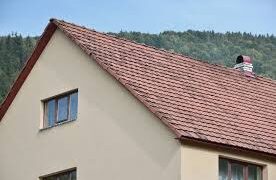Since 2019, more than 2 million homeowners across the US have had solar panels on their homes. As the price of solar continues to drop, more and more homeowners are taking advantage of the benefits.
For example, making their home more sustainable, reducing their carbon footprint, reducing their electricity bill, and even living off the grid. Purchasing solar panels is an investment, however, it will benefit your family and the environment for years to come.
Are you ready to join millions of Americans, but don’t know what types of solar panels to choose from? We’re here to help. In this article, we will go into detail to help you choose the solar panels that are right for your needs.
Types of Solar Panels
There are four main types of solar panels: monocrystalline, polycrystalline, thin-film, and solar shingles. They all differ in price, efficiency, durability, and aesthetic. Understanding these factors will provide you with more insight before you start talking to solar companies.
When you purchase solar panels you are installing a system that is custom and unique for your home. You should be knowledgeable about your options as you would with any other home improvement project.
The following costs of solar panels are the average in the US. It’s important to contact an experienced solar company like Simplysolarcalifornia.com which can provide you with a quote based on your specific energy needs.
1. Monocrystalline Solar Panels
The “mono” in monocrystalline solar panels refers to the pure, single, and continuous crystal of silicon that makes the solar cells. In talks of efficiency and performance, monocrystalline solar panels are the best in the industry with a range of 15-20 percent.
Because of their high-efficiency level, they can produce more energy per square foot. Ultimately, this means you need fewer panels to do the job.
Monocrystalline solar panels are also more efficient than other panels in warmer temperatures. They also perform rather well in low-light due to their purity level. With proper maintenance, these types of panels can last 25-35 years.
However, it’s important to note that most solar companies warrant solar panels for about 25 years. Typically after 25-30 years, the efficiency level of all solar panels begins to decline significantly.
Due to their efficiency and durability advantages, monocrystalline solar panels have one disadvantage—cost. The average price per watt for the panel is $1 to $1.50.
Distinguishing monocrystalline solar panels from other panels isn’t difficult. Simply look for the black panels with the squares that have the edges cut off.
2. Polycrystalline Solar Panels
Like monocrystalline solar panels, polycrystalline solar panels are also made of silicon cells. The difference lies in the “poly” in polycrystalline which refers to the multiple fragments of silicon crystals. In a mold, manufacturers melt them together and then cut the silicon wafers.
These types of solar panels are less efficient than monocrystalline panels—a 13-16 percent range. Because they are less efficient, they take up more space on your roof. They are also not able to withstand warmer temperatures as well as monocrystalline panels.
Heat can affect their performance and reduce their lifespan. They can typically last more than 25 years. However, their efficiency level will also decrease after that.
Due to the lower efficiency levels and heat disadvantages, polycrystalline solar panels tend to cost less than monocrystalline panels—on average between $.70 to $1 per watt for the panel.
Polycrystalline solar panels are square in shape and are a blue-ish color because of the way the light reflects off the many silicon crystals.
3. Thin-Film Solar
Thin-film solar panels are very different from the two previous crystalline panels which use silicon. Rather, their manufacturing process uses different materials like cadmium telluride (CdTe), amorphous silicon (a-Si), and copper indium gallium selenide (CIGS).
As the name suggests, these types of solar panels are very thin and flexible, kind of like a sheet. However, they can be as thick as the former two crystalline panels once they are in a frame.
The number of efficiency ranges depending on the material:
Cadmium telluride (CdTe): 9-11% efficient
Amorphous silicon (a-Si): 6-8% efficient
Copper indium gallium selenide (CIGS): 13-15% efficient
Additionally, thin-film solar panels have a shorter lifespan of about 14-17 years. They are also not as suitable for residential because they require a lot more space.
The main advantage of these solar panels is the fact that they cost less than crystalline silicon panels. This is mainly because they are lighter and easier to install. Therefore, you cut labor costs.
The price of thin-film solar panels ultimately depends on the material. The cheapest to manufacture is CdTe followed by a-Si, and then CIGS.
4. Solar Roof Shingles
Solar roof shingles are a new concept. They are also known as solar tiles that contain solar cells and function similarly to traditional crystalline silicon panels.
Like asphalt shingles, solar shingles are durable and look just alike. Their purpose is to replace your roof while harnessing power from the sun to generate electricity for your home.
Most people that choose solar shingles do so because they either don’t like how solar panels look on their home or because they need a new roof. It may be more cost-effective to install a solar roof than replace your roof and then add solar panels.
The average cost of a solar roof ranges from $60,000 to $75,000. This price does depend on the size and slope of your roof. Although solar shingles are also made from silicon, they are less energy efficient (14 to 18 percent).
Because they are relatively new, the majority of solar companies in the US do not offer solar shingles.
Improve Your Home
Learning about the different types of solar panels is critical when deciding to improve your home with a solar investment. Discuss with a professional the best solar panel options for your home!
If you found this article helpful and are looking for more home-improvement ideas, please read more from our blog!




